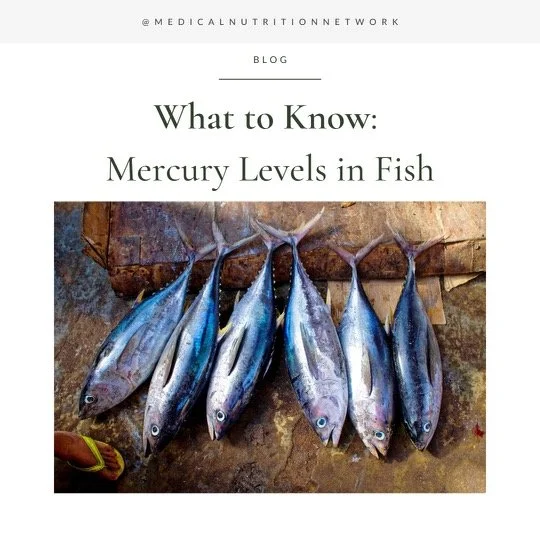What to Know: Mercury Levels in Fish
Should I Be Worried About Mercury in Fish?
Filled with Omega-3 fatty acids and vitamins like D and B2, fish has earned a rightful reputation as a “brain food.” Its nutritional benefits are substantial, connected with heart health and a lowered risk of dementia and depression. The American Heart Association recommends eating fish twice a week. With so many kinds of edible fish to choose from, you can fulfill this (delicious) requirement while keeping a diverse diet.
However, it’s important to keep mercury levels in mind. Mercury is naturally found in soil, rocks, and coal. It is released into the air during the process of decay (when coal is burnt, for example). During precipitation, this pollutant enters rivers, lakes, and the ocean; it is then absorbed into fish through their gills as the neurotoxin methylmercury. Methylmercury accumulates as you move up the food chain. In the simplest terms, when big fish eat small fish, methylmercury builds up in the big fish. Therefore, larger and older fish often have higher quantities of mercury in their systems.
Nearly all fish contain at least trace amounts of mercury. In very small quantities, it shouldn’t be too much of a concern, as the health benefits of fish typically outweigh the negatives. It is advised, however, to be mindful when choosing which fish to consume. Below is a quick guide to fish with high-, mid-, and low-level amounts of mercury.
HIGH LEVEL MERCURY
Shark
Grouper
Canned Albacore Tuna
Swordfish
King Mackerel
Orange Roughy
MID LEVEL MERCURY
Bluefish
Striped Bass
Rockfish
Mahi Mahi
Carp
Halibut
LOW LEVEL MERCURY
Salmon
Catfish
Herring, Sardines
Cod
Flounder
Trout
Symptoms of mercury poisoning can look like tremors, blurry vision, and memory loss. Because it develops gradually, it’s best to check in with a doctor if you have any concerns. Mercury poisoning is very rare, and even eating a high-level fish is likely safe when done in moderation.
Of the fish listed in the chart above salmon, catfish, cod, herring, and sardines are high in brain-boosting Omega-3. You’ve probably heard of Omega-3 before. It’s an essential fat, meaning the body can’t produce it on its own. We have to take special care to seek Omega-3 in the foods we eat in order to optimally nourish the body. Omega-3s help the body function at the cellular level, and in many studies these fats have been associated with improved heart health and a lowered risk for cancer, cardiovascular disease, and Alzheimer’s disease, and age-related macular degeneration.
We’ll place a special highlight on salmon. Salmon is an incredible fish, not only full of omega 3 but also, protein as well as vitamin B12, cobalamin, a nutrient that keeps our body’s blood and nerve cells healthy and is involved in DNA synthesis. Not to mention–it’s a great fish to cook with. Extremely versatile and mild, salmon has a rich flavor easily complemented with citrus and garlic. We have a delicious recipe for one-pan salmon meal right here on our website–check out the Recipes tab, then Fish & Seafood.
If pregnant or breastfeeding, the Dietary Guidelines for Americans recommends to eat 8 to 12 ounces (2- 3 servings) per week of a variety of fish lower in mercury. And for children, the recommendation is to eat 2 servings of fish per week from a variety of fish low in mercury but the portion sizes should be smaller than adult portions and right for your child’s age and body weight.
Remember that your dietary requirements may be different; check in with a doctor or an RDN who can give you personalized instructions based on your individual needs.
